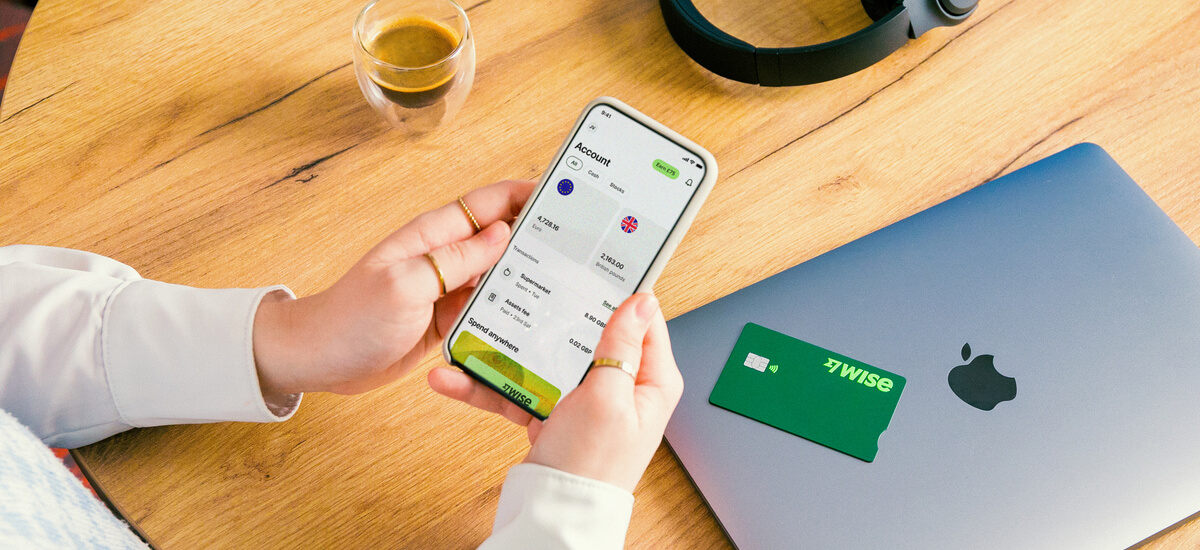Revolut Business Invoices Review (UK - 2024)
If you already use Revolut for your company you may be interested in using Revolut Business invoices to get paid conveniently to your Revolut account by...

If you’re using Stripe as the payment processor for your business, you’ll need to know how to use all of its features.
In this guide, we’ll be focusing on how to set up Stripe recurring payments. These are regular repeated transactions, which could be useful if your company offers subscriptions or payment instalment plans. It could also be needed by organisations which accept monthly donations.
We’ll run through the different types of recurring payments Stripe offers, including how to set them up and whether there are fees involved. We’ll also touch on how Wise Business can help you take international payments with low costs and the mid-market exchange rate.
💡Learn more about Wise Business
Stripe is an Irish-American company which specialises in payment processing. It offers a suite of APIs, which power online payments and commerce solutions for web-based businesses of all sizes.
Its services include the following:
| Learn more about Stripe with our complete review |
|---|
So, does Stripe do recurring payments? Yes, and in a few different ways.
Alongside processing one-off payments, such as when customers purchase products and services, Stripe can also handle repeated and automatic payments.
This can be useful for a wide range of scenarios. For example, if your company sells subscriptions or lets customers set up subscriptions for regular deliveries of products. Interestingly, it’s also possible to migrate existing subscriptions from third-party services over to Stripe.¹
Another popular use for recurring payments is for managing instalment plans. This lets the customer buy now, but spread the cost of the purchase over a few payments. This can make high-value purchases more appealing to consumers.
Repeated payments are also commonly used by charitable organisations which accept donations.
With Stripe, you can set up recurring payments in a handful of different ways, depending on what you need the service for. We’ll look at these in more detail below.
Stripe Billing lets you create and manage subscriptions. It’s possible to automate this through the API, or simply use the dashboard.
You can create payment links for recurring products or services, or set up a subscription schedule for more complex situations.
If you want to offer customers an instalment plan as a way to spread the cost of a purchase, you can set up instalments on Stripe.
You can either use a buy now, pay later (BNPL) service such as Klarna, or set up an instalment plan using the Stripe Subscription Schedules API.
A good option for B2B organisations, this service lets you set up automatic charging for customers and clients. It’s pretty easy to do through the Stripe dashboard or API.
The final option is to use the Stripe Payments Intents API to save a customer’s payment method details. It’s then relatively straightforward to charge the customer at a later date.
As we’ve looked at, there are a few different ways to set up Stripe automatic payments.
To help you get started, we’ll run through the steps involved with setting up recurring payments with Stripe Checkout and subscriptions through Stripe Billing.
If your payment UI is Stripe Checkout, you can set up recurring payments through the Checkout Sessions API.
Stripe Checkout is the platform’s pre-built payment form, which can be embedded directly into your website. This allows you to accept one-off payments or set up subscriptions.
All you need to do is add a button to your site, which prompts the backend of your application to create a new checkout session. After payment, the new subscription will become active.
Billing is a full-service subscription management service from Stripe.
Here’s a rough outline of the process of setting up recurring payments with Stripe Billing:
You can also create subscriptions with payment links, by selecting ‘Sell a subscription’ and sending the link to the customer.
Now, how much will it cost you to use Stripe recurring billing services?
Stripe operates a per-transaction pricing model. This means you’ll pay a percentage plus a flat fee per payment.
To accept recurring payments, you’ll need an integrated suite of Stripe products. This includes Payments and Checkout. The good news is that if you sign up for an integrated suite (rather than Stripe’s Standard plan), you get both included. The charges per transaction are:²
If you want to use Stripe Billing, there’s a fee of 0.5% on recurring payments.² This will be an essential service for creating and managing subscriptions.
For Stripe Invoicing, there’s a fee of 0.4% per paid invoice.²
| Learn more about all Stripe Payments Charges on our complete guide |
|---|
Run an international business? It could be a very smart idea to integrate Stripe with a multi-currency solution such as Wise Business.

Here’s why. If you sell goods or services to customers overseas, you’ll receive payments through Stripe in their currency (i.e. EUR or USD). The currency conversion can be expensive when it comes to receiving the funds into your GBP-denominated business bank account.
But if you connect your Wise Business account to Stripe, you can receive payments in 9 major currencies just like a local. You don’t need separate business bank accounts in each currency, as the Wise account does it all.
You can either leave the funds in your Wise account to cover future expenses in multiple currencies, or you can convert it to GBP for low, transparent fees and mid-market exchange rate³. It could work out much cheaper compared to using a bank.
Get started with Wise Business 🚀
And that’s it - your handy guide on how to set up recurring payments on Stripe.
There are quite a few different ways to do it, so all kinds of transaction types and scenarios are covered. There are options for all business types too. You’ll just need to watch out for the fees for certain services such as Stripe Billing and Stripe Invoicing.
Sources used for this article:
Sources checked on 06-Dec-2023.
*Please see terms of use and product availability for your region or visit Wise fees and pricing for the most up to date pricing and fee information.
This publication is provided for general information purposes and does not constitute legal, tax or other professional advice from Wise Payments Limited or its subsidiaries and its affiliates, and it is not intended as a substitute for obtaining advice from a financial advisor or any other professional.
We make no representations, warranties or guarantees, whether expressed or implied, that the content in the publication is accurate, complete or up to date.

If you already use Revolut for your company you may be interested in using Revolut Business invoices to get paid conveniently to your Revolut account by...

If you have a UK business you’ll need smart and easy ways to pay your team members and comply with your payroll reporting and tax obligations. Using...

Learn how syncing up your favourite accounting software can help to streamline your finances and set you up for success.

Roisin Levine, Wise Platform's Head of Partnerships for the UK and Europe, speaks with Financial IT and explains how banks can leverage our infrastructure.

In today's digital era, having a strong online presence is crucial for any business looking to grow or thrive internationally. Whether you've already expanded...

At EBAday 2024, the Wise Platform team had a strong presence and gained invaluable insights on the evolving cross-border payments landscape.